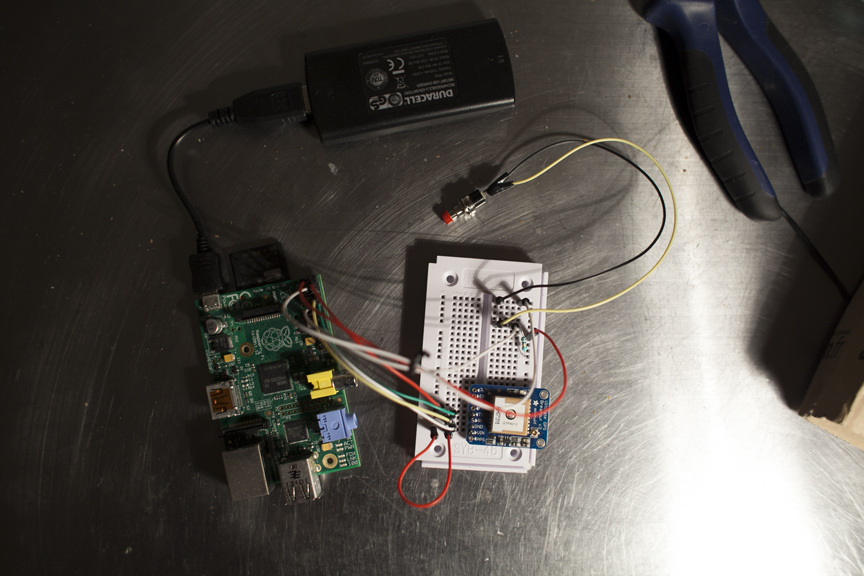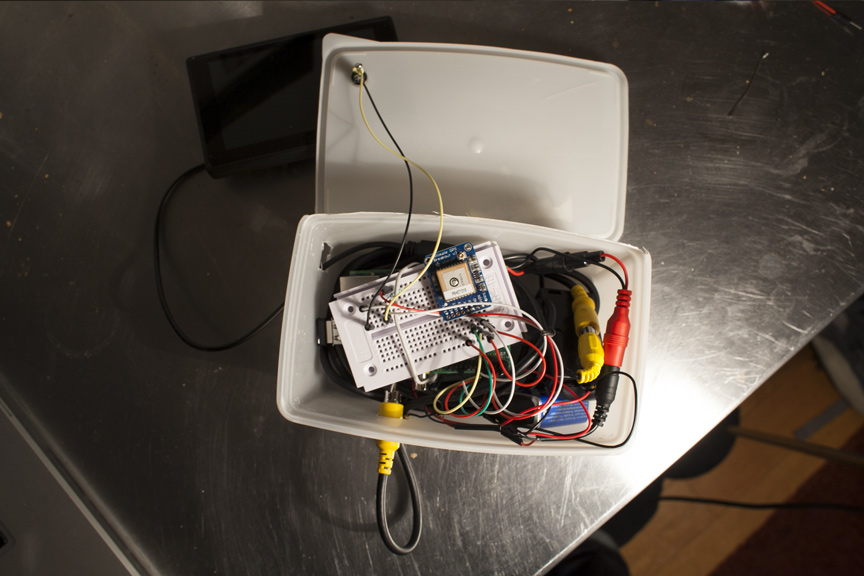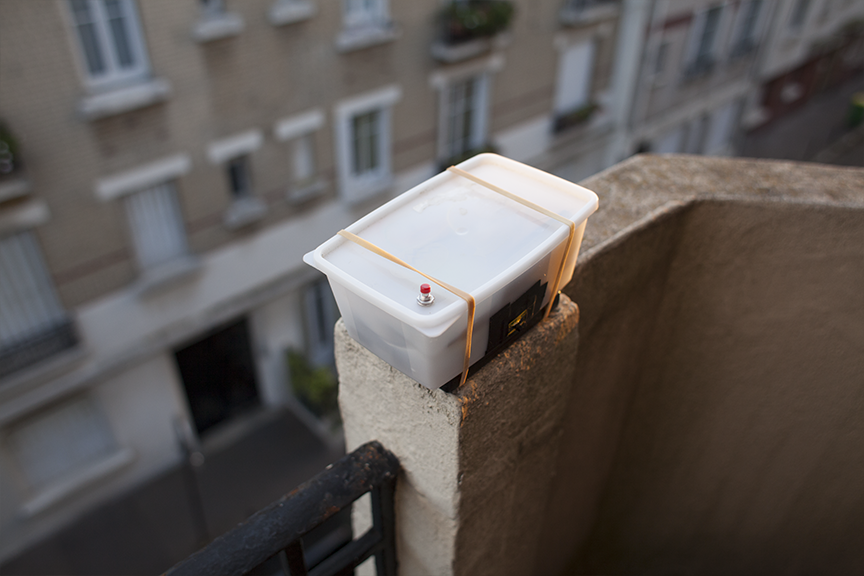Layer cam
14/08/2014
A short-sighted Raspberry Pi camera.
Why are you taking this picture? It’s already on the Internet!
28 million of people visit Paris every year, taking dozens of pictures each. Every building, every statue has been captured, under every sky and every light.
Because billions of pictures of the Eiffel tower have been taken, I am sure that you can find matching cloud patterns in dozen of them, even if taken years apart.
Pictures have been taken with simple pin-hole camera, smartphones or with the most complex and expensive large format silver film camera or DSLR, and lots of them are now online.
On the Internet, those photographies are sprinkled over the city, with some areas densely covered, and other more sparsely. Each website is like a stratum of pictures of every kind: postcards, paintings, photos, satellite images…
Layer cam is a project to tap into those layers, like a drill extracting a core sample of images.
Based on a Raspberry pi, connected to the Internet through wifi and geolocalized by a GPS chip, Layer cam runs with Python code (mostly made from bits of code I found here (Martin O’Hanlon) and there (disasterjs) and taps into Panoramio API. The ‘Layer cam’ logo has been designed by Alice.

Layer cam in prototype mode, out of its box
Hardware needed:
- a raspberry pi
- a breadboard & a couple of wires
- a 10 ohms resistor
- a push button
- an adafruit GPS chip
- a belkin N150 micro Wireless USB adapter
- a battery to power the pi & GPS chip up (a Duracell Instant USB Charger in my case)
- a screen (4.3 Inch LCD TFT Rearview Monitor screen)
- a rechargeable 9V battery to power the screen up, because I wasn’t able to hook the screen up on the pi 5v alim

Messy, but fitting in the box
Here is the code that retrieves pictures on the Internet:

Layer cam tested outside

Layer cam button, ready for a picture

First picture of the street
Extra raspberry pi setup
- Enable SSL connection
- VNC server to display the raspberry pi screen on my laptop
- auto-login on a wifi network + mobile hotspot made from a smartphone
-
Setup Button through GPIO pin Code - GPS initialising
- Display pictures using feh